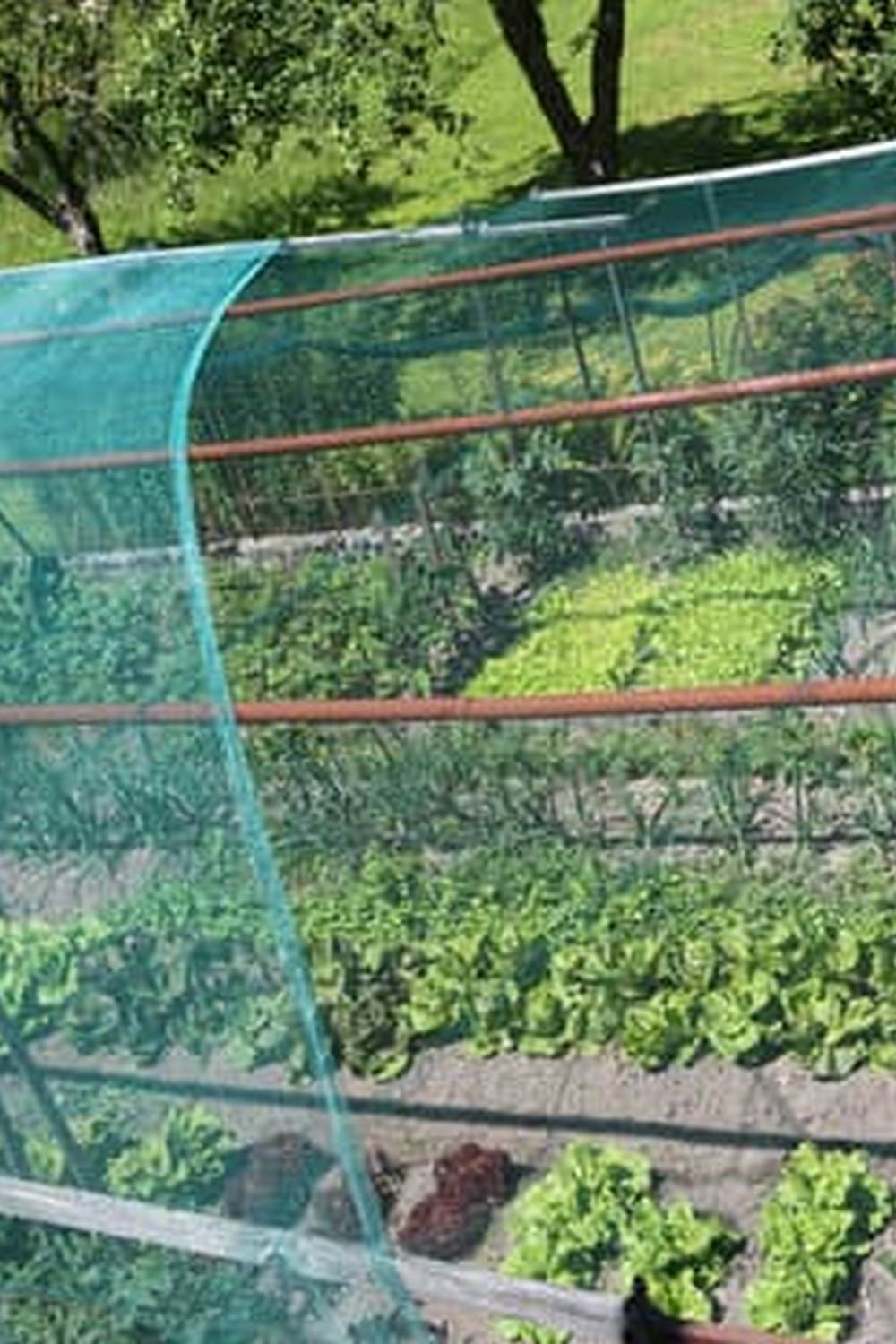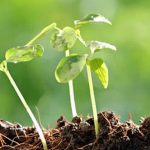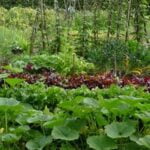Enclosed vegetable gardens are becoming increasingly popular among urban and suburban dwellers who lack the space or the suitable soil for traditional garden plots. These enclosed gardens offer a controlled environment to cultivate a variety of vegetables, fruits, and herbs, allowing individuals to enjoy fresh, homegrown produce regardless of their living situation.
In this article, we will delve into the world of enclosed vegetable gardens to explore the benefits, types, planning and designing strategies, suitable plant options, maintenance tips, yield-maximizing techniques, real-life success stories, and common troubleshooting issues. Whether you are a gardening enthusiast or someone looking to start their first garden project, this comprehensive guide will provide you with the knowledge and inspiration needed to create your own enclosed vegetable garden oasis.
From providing a sustainable food source to fostering a connection with nature and promoting healthier eating habits, enclosed vegetable gardens offer a multitude of advantages. In the following sections, we will take an in-depth look at these benefits and how they can enrich your life. Additionally, we will discuss different types of enclosed vegetable gardens that cater to various needs and preferences. So stay tuned as we embark on an exciting journey into the world of enclosed vegetable gardening.
Benefits of Enclosed Vegetable Gardens
Enclosed vegetable gardens offer a wide range of benefits for both novice and experienced gardeners. One of the primary advantages of having an enclosed vegetable garden is protection from pests and harsh weather conditions.
By utilizing a physical barrier such as a greenhouse, hoop house, or netting, you can prevent the intrusion of harmful insects, rodents, and larger animals that may otherwise nibble on your precious produce. Additionally, enclosing your garden provides a controlled environment that shields your plants from extreme temperatures, high winds, and heavy rainfall, ultimately leading to healthier and more bountiful yields.
Another benefit of enclosed vegetable gardens is the ability to extend the growing season. With the use of structures like cold frames or row covers, you can start planting earlier in the spring and continue harvesting later into the fall.
This extension allows for a longer period of homegrown vegetables on your table without relying on store-bought produce during off-seasons. Furthermore, enclosed gardens create a microclimate that can be manipulated to suit specific plant needs, promoting optimal growth and development.
In addition to protection and season extension, enclosed vegetable gardens also provide the opportunity for increased control over environmental factors. Whether it’s adjusting temperature and humidity levels in a greenhouse or regulating sunlight exposure within a hoop house, enclosing your garden allows for customization according to the unique requirements of different plant varieties.
This level of control can lead to improved overall plant health and better yields than what might be achievable in an open field setting. Overall, the benefits provided by enclosed vegetable gardens make them an attractive option for those looking to maximize their gardening efforts while minimizing potential challenges.
Types of Enclosed Vegetable Gardens
Raised Bed Gardens
One common type of enclosed vegetable garden is the raised bed garden. This type of garden involves building a contained area of soil several inches to a few feet above the ground. Raised bed gardens can be constructed using various materials such as wood, concrete blocks, or even metal frames.
They provide excellent drainage and are ideal for growing vegetables in areas with poor soil quality. Additionally, they are easier to maintain and offer better pest control compared to traditional in-ground gardens.
Container Gardens
Another popular option for enclosed vegetable gardens is container gardening. This method involves growing vegetables in containers such as pots, planters, or even recycled materials like buckets and barrels. Container gardens are perfect for small spaces like balconies, patios, and urban environments where traditional gardening space may be limited. They allow for easy mobility and can be positioned strategically to maximize sunlight exposure for optimal plant growth.
Greenhouse Gardens
For those looking to extend their growing season or protect their crops from harsh weather conditions, greenhouse gardens are a great choice. Greenhouses provide a controlled environment for vegetables to thrive by regulating temperature, humidity, and light exposure. They come in various sizes and designs, from small hobby greenhouses to larger commercial structures. Greenhouse gardens enable the cultivation of a wide range of vegetables throughout the year, making them an attractive option for avid gardeners and commercial growers alike.
When considering the type of enclosed vegetable garden that best suits your needs and space requirements, it’s important to assess factors such as available space, climate conditions, access to sunlight, and the specific vegetables you intend to grow. Each type offers unique advantages and considerations to ensure successful vegetable cultivation in an enclosed environment.
Planning and Designing Your Enclosed Vegetable Garden
When it comes to planning and designing an enclosed vegetable garden, there are several key factors to consider that can help ensure the success of your garden. One of the first steps in this process is determining the size and location of your enclosed vegetable garden. You’ll want to choose a spot that receives ample sunlight and has good drainage, while also taking into account any potential animal threats or weather conditions that may affect your plants.
In addition to location, it’s important to think about the layout and design of your enclosed vegetable garden. Consider using raised beds or container gardening to maximize space and improve drainage. You may also want to incorporate trellises or support structures for vining plants, as well as pathways for easy access and maintenance.
Furthermore, when planning and designing your enclosed vegetable garden, it’s essential to consider the materials you’ll use for construction. While some gardeners opt for traditional wooden frames or chicken wire enclosures, others choose more modern materials such as PVC piping or metal mesh. Whichever route you take, be sure that your chosen materials are durable enough to withstand the elements and provide adequate protection for your plants from pests.
Ultimately, thoughtful planning and design are crucial for the success of enclosed vegetable gardens. By carefully considering factors such as location, layout, and materials, you can create a functional and productive space for growing a variety of vegetables in a protected environment.
Suitable Vegetables for Enclosed Gardens
When it comes to planning and designing your enclosed vegetable garden, it is important to consider the types of vegetables that are most suitable for this type of environment. With limited space and controlled conditions, certain vegetables thrive better in enclosed gardens compared to others. Here are some suitable vegetables for enclosed gardens:
- Leafy Greens: Varieties such as lettuce, spinach, kale, and swiss chard are well-suited for enclosed vegetable gardens due to their compact size and quick growth cycle.
- Herbs: Culinary herbs like basil, parsley, cilantro, and mint can easily be grown in enclosed gardens, adding flavor to your dishes while taking up minimal space.
- Tomatoes: Compact or dwarf varieties of tomatoes are ideal for enclosed gardens. These plants can be supported with trellises or cages to maximize vertical space.
- Radishes: Quick-growing root vegetables like radishes are perfect for enclosed gardens. They can be harvested within a few weeks, making them an efficient use of space.
In addition to these vegetables, other suitable options include peppers, cucumbers, green onions, and microgreens. It is important to consider the space available in your enclosed garden and choose vegetables that will thrive in that specific environment.
When selecting the vegetables for your enclosed garden, it is also essential to consider their sunlight requirements, water needs, and compatibility with other plants in the same space. By carefully choosing a diverse selection of suitable vegetables, you can create a thriving and productive enclosed vegetable garden.
Maintenance and Care for Enclosed Vegetable Gardens
When it comes to enclosed vegetable gardens, maintenance and care are essential to ensure the success of your garden. Here are some important tips and guidelines to keep in mind when maintaining and caring for your enclosed vegetable garden:
1. Regular Watering: Proper watering is crucial for the health and growth of your vegetables. Make sure to water your plants regularly, especially during dry or hot weather. Consider using a soaker hose or drip irrigation system to ensure even watering.
2. Weeding: Regular weeding is necessary to prevent competing plants from stealing nutrients and sunlight from your vegetables. Take the time to remove any weeds that may appear in your enclosed garden, being careful not to disturb the roots of your vegetable plants.
3. Pest Control: The enclosed nature of these gardens can sometimes make them more susceptible to pests. Keep an eye out for common vegetable garden pests such as aphids, cabbage worms, and slugs. Consider using natural pest control methods such as introducing beneficial insects or using organic insecticidal soaps.
4. Fertilization: Enclosed vegetable gardens may require additional fertilization to ensure that the soil remains rich in nutrients. Consider using organic fertilizers or compost to feed your plants throughout the growing season.
5. Mulching: Applying a layer of mulch around your vegetable plants can help retain moisture, suppress weeds, and regulate soil temperature. Consider using materials such as straw, wood chips, or shredded leaves as mulch in your enclosed vegetable garden.
By following these maintenance and care tips, you can ensure that your enclosed vegetable garden thrives and produces a bountiful harvest of fresh, healthy vegetables.
Tips for Maximizing Yield in Enclosed Vegetable Gardens
Enclosed vegetable gardens offer a controlled environment for growing vegetables, which can lead to higher yields compared to traditional open gardens. To maximize yield in an enclosed vegetable garden, there are several tips and techniques that can be implemented.
One effective way to maximize yield in an enclosed vegetable garden is to make the most of vertical space. Utilizing trellises, stakes, and other vertical structures can allow vining plants such as tomatoes, cucumbers, and peas to grow upward, saving space and increasing overall yield. Additionally, interplanting compatible crops and using companion planting techniques can help maximize the use of available space while also promoting healthy growth.
Another important factor in maximizing yield is proper soil management. Enclosed vegetable gardens often use raised beds or containers, allowing for complete control over the soil composition. Using high-quality compost, mulch, and organic fertilizers can enrich the soil and provide essential nutrients for plant growth. Regular monitoring of soil moisture and pH levels is also crucial for maximizing yield in an enclosed vegetable garden.
Furthermore, implementing a strategic planting schedule can ensure a continuous harvest throughout the growing season. Succession planting, where new crops are planted as soon as old ones are harvested, can help optimize the use of available space and extend the productivity of the garden. Additionally, utilizing season extension techniques such as row covers or cold frames can allow for earlier planting in spring and later harvests in fall.
| Tips for Maximizing Yield | Enclosed Vegetable Gardens |
|---|---|
| Utilize Vertical Space | Vertical structures can save space and increase overall yield |
| Soil Management | Using high-quality compost and regular monitoring of soil moisture and pH levels |
| Strategic Planting Schedule | Implement succession planting and season extension techniques for continuous harvest |
Success Stories
Increased Yield and Quality
Many gardeners have reported significant success with enclosed vegetable gardens, particularly in terms of increased yield and improved quality of their produce. By providing a controlled environment, enclosed vegetable gardens are able to protect plants from pests and harsh weather conditions, resulting in healthier and more abundant crops. Gardeners have noticed that their vegetables are not only larger in size but also free from blemishes and other imperfections commonly caused by external factors.
Extended Growing Season
One of the most commonly shared success stories about enclosed vegetable gardens is the extension of the growing season. With the ability to regulate temperature and protect plants from frost, many gardeners have been able to grow their favorite vegetables well beyond their natural growing period. This has allowed them to enjoy fresh produce throughout the year, even in regions with extreme weather conditions.
Community Engagement
Some gardeners have found that their enclosed vegetable gardens have become a focal point for community engagement. By sharing their experiences and showcasing the benefits of enclosed gardening, they have inspired others in their neighborhood to start their own projects. This sense of community involvement has led to shared knowledge and resources, as well as a greater appreciation for sustainable living practices.
Overall, these success stories serve as testaments to the potential of enclosed vegetable gardens in revolutionizing the way we approach home gardening. Gardeners continue to find innovative ways to optimize their yields, extend their growing seasons, and inspire others through their real-life experiences with enclosed vegetable gardens.
Troubleshooting Common Issues in Enclosed Vegetable Gardens
When it comes to enclosed vegetable gardens, there are a few common issues that gardeners may encounter. One of the most frequent problems is poor ventilation, which can lead to an overgrowth of mold and mildew. This is especially true in small, enclosed spaces where air circulation is limited. To address this issue, consider installing a small fan or ensuring that your enclosed garden has adequate vents to allow for proper airflow.
Another common issue in enclosed vegetable gardens is pest infestations. Without the natural predators found in open-air environments, pests can quickly take over an enclosed garden if not properly monitored. To combat this issue, consider using organic pesticides or introducing beneficial insects, such as ladybugs or lacewings, to help control the pest population.
Finally, inadequate lighting can be a problem in enclosed vegetable gardens, especially if they are located indoors or in shaded areas. Insufficient light can lead to stunted growth and poor yields. To resolve this issue, consider installing grow lights or choosing vegetables that thrive in low-light conditions.
These troubleshooting tips can help ensure the success of your enclosed vegetable garden and address some of the common challenges that come with gardening in a confined space.
| Common Issue | Troubleshooting Tip |
|---|---|
| Poor ventilation leading to mold and mildew | Install a small fan or ensure adequate vents for proper airflow |
| Pest infestations | Use organic pesticides or introduce beneficial insects to control pests |
| Inadequate lighting | Install grow lights or choose vegetables that thrive in low-light conditions |
Conclusion
In conclusion, enclosed vegetable gardens offer numerous benefits and opportunities for both beginner and experienced gardeners. The ease of maintenance, protection from pests and harsh weather conditions, as well as the ability to extend the growing season make enclosed vegetable gardens an attractive option for those looking to grow their own produce.
As more people become interested in sustainable and self-sufficient living, the future of enclosed vegetable gardens looks promising. With advancements in technology and design, it is becoming easier and more affordable for individuals to create their own enclosed garden spaces, whether it be a small greenhouse or a simple raised bed with a protective cover.
Furthermore, as climate change continues to impact traditional gardening practices, enclosed vegetable gardens provide a solution by offering a controlled environment that can adapt to changing weather patterns. With careful planning, suitable vegetable selection, and proper maintenance, the potential for high yields and successful cultivation in enclosed vegetable gardens is vast. As we look ahead, it’s clear that enclosed vegetable gardens will play an important role in helping individuals and communities achieve food security and sustainability.
Frequently Asked Questions
Should I Enclose My Vegetable Garden?
Enclosing your vegetable garden can be beneficial in protecting your plants from pests and harsh weather conditions. It can also help in keeping out animals that may damage or eat your crops.
How to Build a Vegetable Garden Enclosure?
When building a vegetable garden enclosure, consider using materials such as wood, chicken wire, or PVC pipes to construct the frame. Make sure the enclosure is tall enough to accommodate the height of your mature plants and secure enough to keep out unwanted intruders.
What Is an Enclosed Garden Called?
An enclosed garden is often referred to as a “hoop house” or a “greenhouse.” These structures provide a protected environment for growing vegetables and other plants by controlling temperature, humidity, and exposure to external elements.

If you’re looking to get into vegetable gardening, or are just looking for some tips on how to make your current garden better, then you’ve come to the right place! My name is Ethel and I have been gardening for years. In this blog, I’m going to share with you some of my best tips on how to create a successful vegetable garden.





